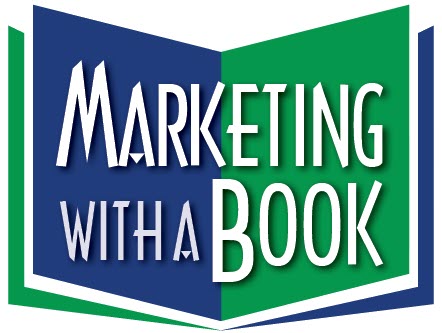Marketing With A Book To Find New Clients Now!
The number one business development tool to attract high-paying clients is publishing a book; speaking about the book is the number one sales strategy to fill a dusty pipeline with qualified right-fit prospects.
Publishing a book is the starting line for agency, business coach and consultant business development, not the finish line. And what is the best way to get to the starting line with a book that can create a 400 percent to 2,000 percent ROI? Here are the flowchart steps:
- Select Target Rich Niche. The narrower the focus, the more powerful the appeal. Be interesting to less prospects and have them be more intensely interested in you and your work.
- Conduct Proprietary Research. Gather secondary data from others, undertake an extensive literature review of books and journal articles, and conduct primary interviews where possible. Buy a dozen books on your subject and capture two dozen articles. Conduct in-depth interviews with prospects on the subject. To paraphrase Sir Isaac Newton, if you want to see farther stand on the shoulders of giants.
- Determine Number One Problem. Be a heat-seeking missile for the number one pain of your prospects. Record, with permission, interviews and focus group sessions to use their exact words.
- Create Proprietary Problem-Solving Process. Typically, six to eight steps, principles, or practices. Name it the blank blank method, system, process, or methodology. Write down your tips, tactics, advice, and strategy. Then start sorting by putting them into six to eight buckets of related information.
- Choose Which Of The Eight Great Stories For Overarching Story. These are monster, underdog, comedy, tragedy, mystery, quest, rebirth, or escape. Typically, agency and consultant books are about monster problem, mystery, quest, or rebirth.
- Create Outline With Working Title, Subtitle, And Contents. This is the writing road map, but I prefer to call it a blueprint. Books are built like houses are built. Do not try to write by seat-of-the-pants inspiration.
- Draft The Sloppy First Copy. Any book worth writing is worth writing a first draft that sucks. The magic will be in the rewrite. But first, you must get it out of your head and onto paper. Consider recording from outline and transcribing, because this is ten times faster and has more energy.
- Write Part I, The Why. Typically, two chapters: why the problem matters and how to solve it in general (an overview of your proprietary process.
- Write Part II, The How. Typically, six to eight chapters examining the parts of the proprietary process in detail. Name the process. Put on copyright page that you intend to trademark. Prospects respect process.
- Write Part III, What’s Next. Typically, two chapters about sustaining the process, or creating a culture, and a forecast for the future.
- Solicit Qualified Feedback For Second Draft. This is the role of a developmental editor. Choose someone who is qualified. If you want beta readers too, that is fine just adds time to the process.
- Rewrite Magical Second Draft. The magic is in the rewrite.
- Submit Publishable Manuscript For Publication. This is the version the author and the developmental editor are happy with. But this is not the last chance you have for revision.
- Gather Feedback From Professional Copyeditors. Get more qualified eyes on the book, especially a qualified Chicago Manual of Style editor.
- Create Book Front Cover Design. In conjunction with step 14, work with an art director on cover design. This needs to be completed before you can proceed to step 16.
- Submit Approved Manuscript To Art Director. Now you have crossed out of the realm of Microsoft Word doc edits to a designed layout.
- Solicit Foreword And Testimonials. Use the MS Word doc from step 16 to solicit someone to write a foreword and other notables to endorse the book with a back cover blurb. This happens simultaneously as art director is laying out galleys.
- Review Twenty-Page Design Mockup. Provide detailed feedback to the art director for the look of the book (I use an eighteen-point checklist, see appendix).
- Art Director Creates Full Galley. With the feedback from step 18 the art director can create the whole book.
- Proof Full Galley. Author’s team and the publisher’s team must proof the manuscript in detail for gremlins. Rewriting at this stage costs extra money.
- Produce Print On Demand Paperback Book. Submit approved pdfs to publishing service.
- Produce eBook. Submit approved pdfs to eBook publishing service.
- Produce Hardback Book. Submit flyleaf cover design and book pdfs to hardback book publishing service.
- Produce Audible Book. Audition readers and have audio editors produce digital files.
- Conduct Soft Launch Campaign. There is a time period between when the book is available for purchase as a paperback on Amazon.com and all formats of the book are available. This is known as the soft launch period and can take up to sixty days.
- Conduct Hard Launch Campaign. Consider running a ninety-nine-cent Kindle eBook campaign of one to two weeks to gather verified purchase reviews on Amazon. Buyers judge books by the number of reviews. First goal is two dozen reviews, second goal is more than one hundred reviews. Also consider hosting a live or virtual launch event to generate buzz. If you do not treat the book launch like it is a big deal, how will others think it is a big deal?
- Book And Deliver Small-Scale Seminars. These can be live or on Zoom. Consider hosting six to twelve a year. Objective is five to ten people in discussion about the book topic. Use LinkedIn to find target audience.
- Solicit Publicity And Podcast Appearances. Write and distribute a national news release. Solicit a minimum of two podcast interviews a month about the book.
- Begin Monthly Sample Book Mailings. Do not wait for the book to be discovered. Mail a minimum of twenty gift copies of the book each month to people who can book you as a speaker, book you as podcast guest, hire your agency, or write about the information in the book.
- Lather, Rinse, Repeat. Consistency trumps blitzkrieg campaigns. Think tortoise and hare fable: slow and steady wins the race. Business development should be viewed as a marathon, not a 100-meter dash.
#agencyowner #agencygrowth #consultant #businesscoach #bookmarketing

